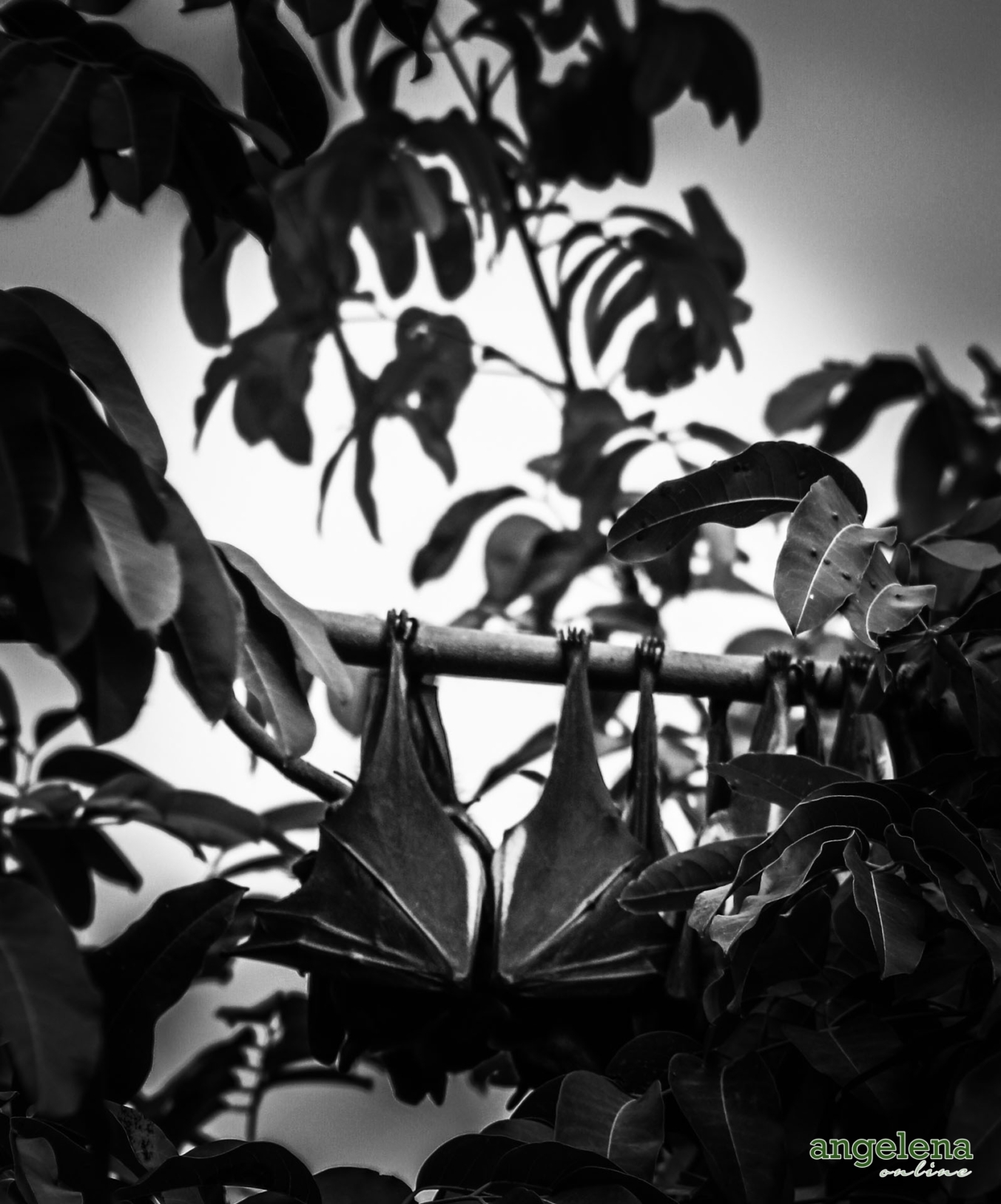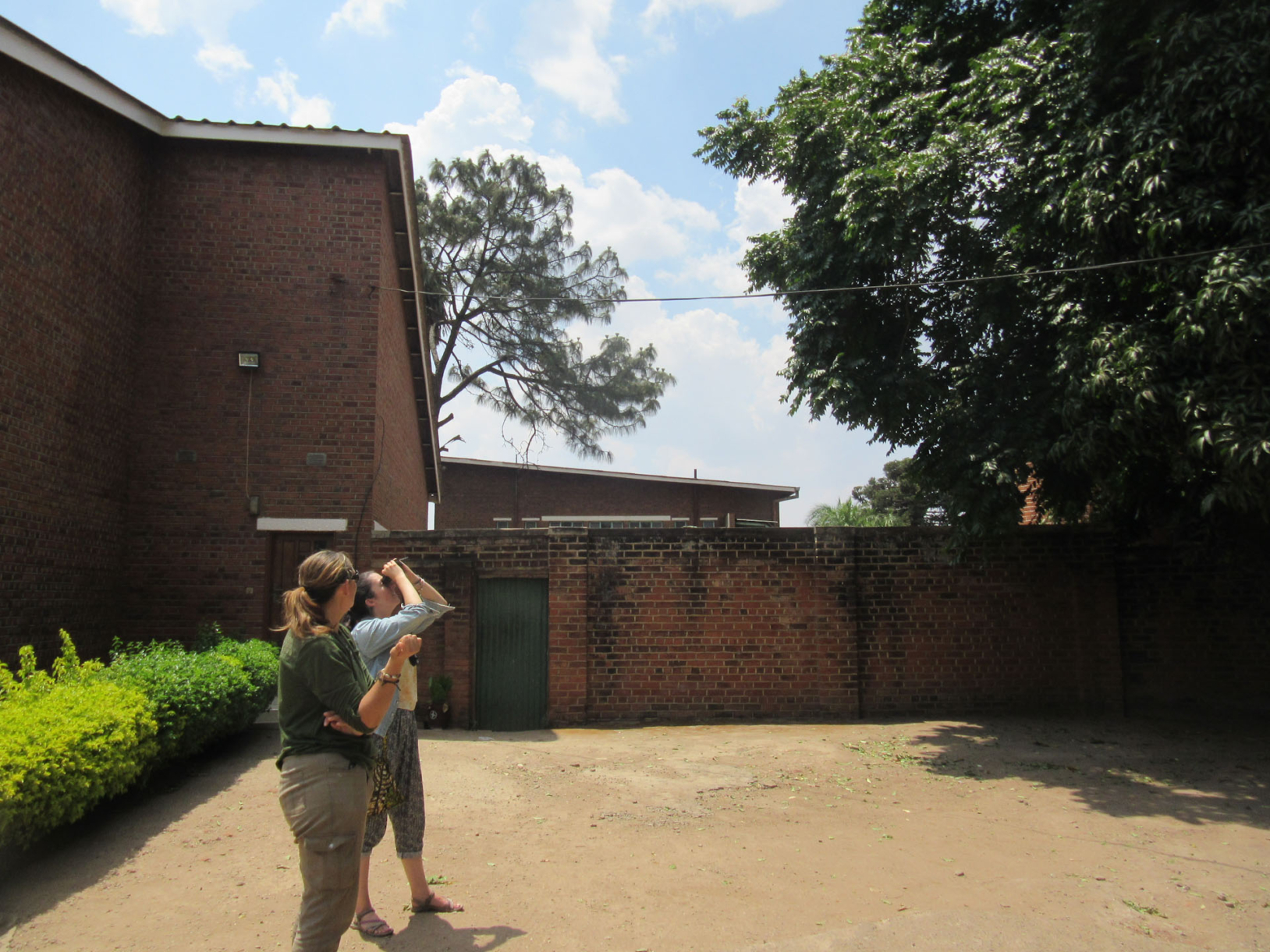 Despite being listed as Near Threatened by the International Union for Conservation and Nature (IUCN), there is limited information on how Straw colour fruit bats behave in an urban environment. Here in Lilongwe, a group of Straw-coloured fruit bats have roosted in a central Lilongwe location for over 15 years. Despite how busy the area can get they take up residence here every November through to March/April. However, they are not always so welcomed by the landowners and therefore tension can arise over left over food on the ground and splats from the bats.
Despite being listed as Near Threatened by the International Union for Conservation and Nature (IUCN), there is limited information on how Straw colour fruit bats behave in an urban environment. Here in Lilongwe, a group of Straw-coloured fruit bats have roosted in a central Lilongwe location for over 15 years. Despite how busy the area can get they take up residence here every November through to March/April. However, they are not always so welcomed by the landowners and therefore tension can arise over left over food on the ground and splats from the bats.
The location is a large church and this year the new priest had been talking with African Bat Cconservation about how we can talk to a wider audience and address the service congregation on bats and their benefits in order to encourage a peaceful co-existence. Tom (Senior Research Assistant) and Dominique (Research Assistant) spoke to the audience about bats and all the ecosystem services they provide. Then not far away, myself and Joan (Research Assistant) went to look out for whether we could get any intel on where the bats fly after they take flight during their evening forage. We followed them by car to see where they would go, this technique gave us loads of insight into new sites across the City!
 Additionally to where they go, little is known on the bats diet during their time here in Lilongwe or how far they travel from their main roosting site to their foraging grounds. So the more data we can obtain on them, then the more ABC can learn about what their requirements are and to better understand their movements in the city. This type of information, can help inform planning at a government level which is really important when trying to protect wildlife from further declines. The bats return here year after year and therefore something must be of value for them to make them return to Lilongwe. The bats are large and able to travel huge distances, straw colour fruit bats take part in the world’s largest mammal migration. They arrive in Lilongwe each year shortly before the rains and stay until the rains stop, they forage on different fruit trees for which we hope to gain more info through faecal samples at their main roost site.
Additionally to where they go, little is known on the bats diet during their time here in Lilongwe or how far they travel from their main roosting site to their foraging grounds. So the more data we can obtain on them, then the more ABC can learn about what their requirements are and to better understand their movements in the city. This type of information, can help inform planning at a government level which is really important when trying to protect wildlife from further declines. The bats return here year after year and therefore something must be of value for them to make them return to Lilongwe. The bats are large and able to travel huge distances, straw colour fruit bats take part in the world’s largest mammal migration. They arrive in Lilongwe each year shortly before the rains and stay until the rains stop, they forage on different fruit trees for which we hope to gain more info through faecal samples at their main roost site.
 The Team have also been busy (I played no part) making some much larger mist net poles from bamboo, which have proven to be a fun experience putting up and down, which will give us that extra height we need to catch them for radio tagging. On our first night testing our new set up we managed to successfully catch a female but as she was carrying a pup we had to swiftly release her without processing! The poles are so heavy and long it takes several of us to get them set up! We have to also carefully manoeuvre around various obstacles being really careful not to hit anything in the tightly packed garden sits we survey at.
The Team have also been busy (I played no part) making some much larger mist net poles from bamboo, which have proven to be a fun experience putting up and down, which will give us that extra height we need to catch them for radio tagging. On our first night testing our new set up we managed to successfully catch a female but as she was carrying a pup we had to swiftly release her without processing! The poles are so heavy and long it takes several of us to get them set up! We have to also carefully manoeuvre around various obstacles being really careful not to hit anything in the tightly packed garden sits we survey at.
The ABC Team are hoping to capture 10 Straw colour fruit bats through mist netting, then after obtaining biometric data, attach a radio tag which will enable us to capture data on their movements across the City and perhaps beyond. Then we can see what trees they forage at and at what their favourite fruits are. This will enable us to identify foraging sites which are important to the species and better understand why they keep coming back to Lilongwe. Hopefully, safeguarding resources for their future. Wish us luck!













